What Is On-Page SEO?
On-page optimization for search engines is the process of optimizing sections of a page or a collection of pages throughout a site to improve the overall SEO of a website.
We term this on-page SEO or on-site SEO because we concentrate solely on different aspects within a page or the code of a page. On-page SEO applies to the page’s content, titles, tags, links, keyword selection, metadata, and other optimization.
It will be a fairly straightforward post. No nonsense, just the essentials. We chose to divide the main section of this post into eight summary points. Following that, we will discuss some additional checklist of On-Page SEO.
8 On Page SEO Checklist
1. How to Research Keywords
This is the first step you must take. Without target keywords, you cannot proceed with on-page Search Engine Optimization methods. Titles, URLs, Meta descriptions, Contents, Heading Tags, and other all types of optimizations need Keywords.
You can follow Neil Patel’s post to research keywords.
Additionally, you can follow the below tips:
- Avoid using similar keywords in multiple posts. Different posts may compete with each other in the SERP for similar keywords.
- Use tools for keyword research, and find a keyword with high search volume yet low competition. Some recommended tools to research keywords are:
- It is vital to conduct keyword research. If your target keywords do not accurately reflect the content of your page, all other on-page SEO efforts will be ineffective. You will also have a lower chance of ranking higher in the SERP.
Quality content should have some targeted keywords naturally integrated into the body of the article. However, there are some places where you need to put your keywords intentionally. Places include:
-
-
- Title
- Headings
- Meta description
- URL
- Image file name and alt text
-
We will gradually discuss these points in detail in the later sections.
2. Creating Title Tag for Page
Title tags are the titles of pages that people view in search results. It is the HTML element that specifies the title of a page. We can find the title tag in the head portion of every webpage.
We can write an HTML title tag like this:
How to Write HTML Title Tag
HTML Code for Title Tag:
<title>This is an example of page title – itcheats.com</title>

Example of Page Title
There are several reasons why title tags are significant. It can assist search engines in determining the topic of your website. Also, it can influence the search result a person pick.
Title Tag Optimization Guidelines to Follow
- We should create title tags based on the overall hierarchy of a website. The home page or other page’s title tag should be different than one other.
- Try to start the title with your desired keywords.
- Don’t squeeze too many keywords into the headline.
- You can use Title Tag Modifiers like cheap, best, checklist, etc.
- You can create question-based title tags. It can help you to get a better response.
- Be explicit about the content.
- In title tags, use numbers. It has the potential to increase CTR.
- Limit it to 60 characters or fewer to avoid Google chopping it off.
- In the title, include the name of your brand at the end.
- You can create your title tag distinct from the H1 page heading. We can see the H1 tag title while on the page. It is basically the post title. We can have a more creative title for the H1 page heading and it’s not limited to 60 characters.
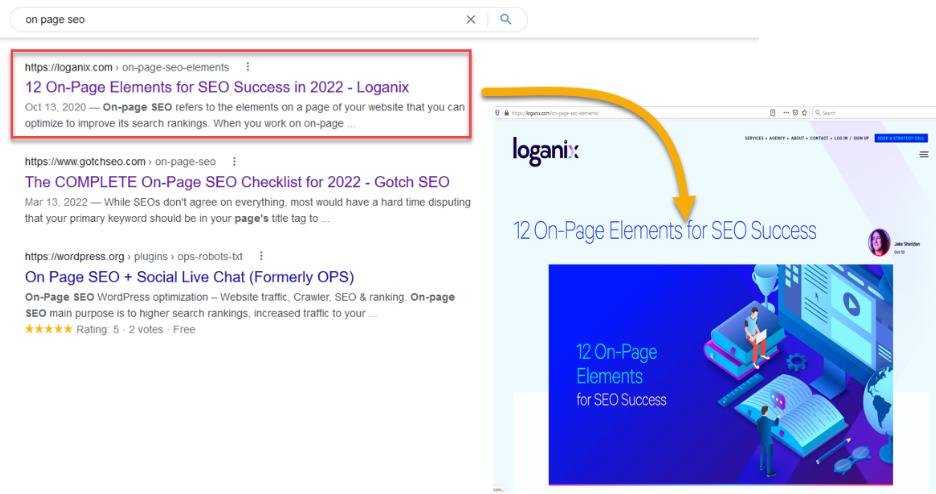
Title tag vs H1 heading tag
It is not required to have a different title tag and H1 tag. Having a choice, on the other hand, is a positive thing.
3. How to Optimize URLs for Search Engines
URLs help search engines interpret pages. As per Google, they want URL structure simple. They have some recommendations on how to create URLs.
Keyword Inclusion
In the URL, include your target keyword. It assisted search engines and users in understanding what’s inside. Avoid stuffing keywords into the URL. Use 1-2 keywords in the URL.

Keyword in URL
Short and Simple URL
Keep your URL simple and short, and include descriptive words in addition to the target keyword. Shorter URLs are preferable to long URLs, according to Backlinko. It helps in ranking higher in the SERP. According to Neil Patel, the ideal URL length is 50-60 characters and no more than three to five words.

Simple and Short URL
Structure of Geo Target URL
Google suggests using a local word in the URL if you are targeting a local audience. Consider using a URL structure that allows you to geo target your site if it is multi-regional. Pfefferminz, for example, is a German word, and the URL below was designed with a German audience in mind.

Geo Target URL
Hyphens and Numbers in URL
Do not use numbers and special characters in the URL. Use real words. Consider using Hyphens. It makes URLs more readable and easily identifiable by users and search engines. For example, “***.com/best-gyms-Miami” is better than “***.com/bestgymsmiami”.
Not Recommended for URL Structure
-
- Avoid using underscores (_).
- Do not keep your keywords joined together.
- Do not use Session IDs.
- Do not use extra, unnecessary words.
4. Meta Descriptions
In search results, we can see a short description under the title. It’s called the Meta Description. It’s a quick overview of your page. On-page SEO is not affected by a meta description directly. However, it is a tool that assists people in learning more about your page.
Meta descriptions have two advantages. It can help Google to understand what your website is about and influence your CTRs.
Meta Descriptions Best Practices
-
- Try to write Meta Descriptions under 160 characters.
- Give a brief, precise outline of the subject.
- Consider including target keywords (The user will see it highlighted in the SERP).

Example of Meta Description
We can add meta descriptions by inserting the below HTML script in the <head> section of the page .

Meta Description HTML Code
We can create Meta Description by using Yoast or Rank Math plugins on a WordPress website.
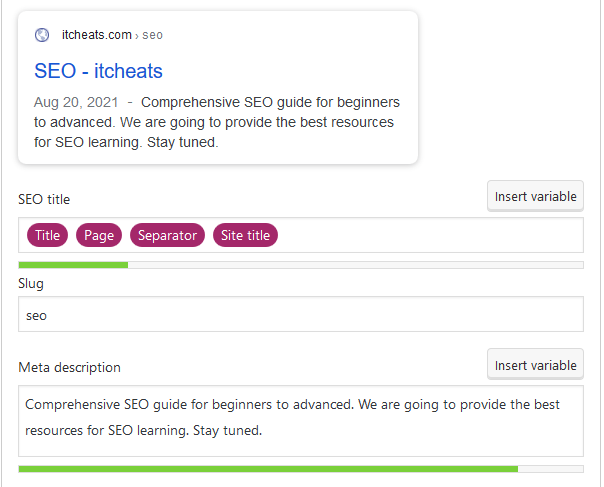
Meta Description using Yoast SEO
5. How to Create Unique, Valuable, and Fresh Content that Satisfies Search Intent
Visitors come to a website in search of content that is meaningful to them. If they can’t find them, they will seek alternatives. Finally, nothing you do will be beneficial unless your website provides meaningful information. Paid ads or executing excellent search engine optimization can bring you early visitors, but after a while, they will depart and visit other websites. And they will not be returning to your website.
Effective Content Writing Tips
- Make sure your target keywords appear in the first 100-150 words.
- Avoid stuffing keywords into your writing. However, integrate keywords into your content organically a few times.
- Naturalize the use of short and long-tail keywords within your content.
- Make an effort to create original and unique stuff. It should be different from other articles on the same topic.
- You can make your content stand out by including a case study and a step-by-step process.
- The headline should reflect the content. You should get accurate information inside of a post after reading the headline.
- The content should deliver the information a person seeks when searching for a keyword.
- If you’re optimizing a blog post, it should be at least 1,500 words long.
- Use headings and subheadings to increase readability. Add bullet points and paragraphs to arrange and scale the content.
- Use images, infographics, charts, diagrams, and illustrations in the body of your writing. Use facts and real-life numbers. These can be more appealing to visitors than the identical information presented in text style.
- Avoid long sentences. It can add more details and may describe things more extensively. On the other hand, it compels readers to remember more information at once. So, instead of a long sentence, use short ones.
- Try to keep paragraphs to 100 words or less to improve readability.
- When writing material, active voice is preferable over passive voice. It produces more direct, energetic writing.
- Do not use repetitive sentence structure. Mix basic, complex, and difficult statements to avoid becoming predictable.
- Maintain your focus on the specified topic and keyword. Do not attempt to include everything in your post.
- Avoid utilizing duplicate materials.
- Examine for plagiarism. And make changes if found.
- Check for spelling mistakes.
According to search engines and SEO experts, it is the most important On-page SEO factor.
6. How to Use Heading Tags
Heading tags assist in determining web page content structure. It specifies which text is more significant than the other. We can differentiate headings and subheadings from the tag used. They are labeled H1 through H6. The highest (or most essential) tag is H1, whereas the lowest is H6. For example, the title of any post is most important. So, for the below post title <h1> tag is used.

Heading H1 tag
We can improve SEO in several ways by using a variety of Heading tags. A page full of text without headings and subheadings will be less enjoyable to read. Headers help users to understand what will be ahead. It can enhance the overall experience of a user staying on a website. And Google considers user experience an important factor.
Google can understand the content of a page better with the help of Headers. Headers with keywords also help with SEO.
Heading Tags Best Practices
-
- Contain page or post title within the <h1> tag. It is the most significant tag. Search engines might overlook it if it is not inside the <h1> tag.
- It is better to use only one <h1> per page.
- Utilize the <h2> element to highlight main sections of your article. You can include keywords in at least two subheaders that employ <h2> tags.
- To label, the points made in each H2 section, use <h3>. Use them only when essential, and don’t bother with keywords.
- In terms of SEO, h4> to h6> are insignificant. However, only utilize these if your material requires it.
Headers also assist Google to display your page in results for more precise queries connected to the page, giving you additional possibilities to appear on Google’s front page. The most crucial aspect of headers is to make them descriptive. Simply perusing the headlines should provide the reader with the essence of the page.
7. Links as On-Page SEO Factor
There can be three different types of links involved in any website.
-
- Internal Links
- External Links or Outbound Links
- Inbound Links or Backlinks
In this post, we will go over Internal and External Links. These are examples of on-page SEO. Off-Page SEO includes Inbound links, also known as Backlinks.
Internal Links
The process of hyperlinking to other related pages or posts on your website is known as internal linking. We sometimes ignore internal linking. However, it is critical for on-page SEO.
Internal links allow search engine crawlers to find more pages. Readers can go to other pages of your website through internal linking. It will keep readers engaged with your website. Also, Google and other search engines will find your website valuable if they find users are staying on your website longer.
An internal linking strategy helps reduce bounce rates and improve the conversion rate. It is good to add at least two to three internal links. If you’re having difficulty finding pages to link, don’t force. You can add internal links at a later date.
Internal Linking Best Practices
-
- When needed and relevant, add internal links.
- Keywords are not mandatory for internal links. Use keywords wisely.
- Add internal links in the main content.
- Do not stuff internal links.
External Links
Because external links are not a direct ranking consideration, linking to reputable websites will not improve your SEO rankings. Referencing your content with links, on the other hand, develops confidence, which is vital for users.
External Linking Best Practice
-
- Only link to a trusted website or content.
- Linking websites or content should provide value to your reader.
- Link to related websites with unique material.
- Use no follow or do follow tags wisely.
- Linked to authoritative websites (like Bloomberg etc.).
- According to Brian Dean, link to at least three high-quality websites for an article.
8. Image Optimization for Search Engines
Images make web pages livelier and enticing. Readers will spend more time on a page if it is visually appealing. Spending more time on a page can also help with ranking.
However, poorly optimized images can cause your website to load slowly. We need to optimize images to get the best outcome.
Image Optimization Best Practices
Original Images
It is preferable to use original and one-of-a-kind images in your content. Stock photos might harm your SEO ranking. According to Shai Aharony’s research, he achieved a higher SEO rank by employing original content. If you are using a stock image, please add the source reference.
Image Alt-Text
Search engines cannot interpret images on their own. Alt-text describes the content of images. It assists search engines in understanding what an image represents. When implementing image alt text, keep the following in mind:
-
- Add keywords in the alt tags. Make it SEO friendly.
- Make it descriptive and relevant.
- Keep it under 125 characters.
- Avoid stuffing keywords into alt-text.

Image Alt-text
Optimize Image for Speed
Images must be optimized and used in such a way that they do not slow down the page. Images must be scaled to fit the width of your website. Although websites automatically resize images, doing so may slow down the website. Compress images properly to reduce file size while maintaining quality. Use tinypng.com or imagecompressor.com to compress an image. Also, you can avail a CDN service for your website to deliver faster images.
Image File Name Optimization
Include the target keywords in the image file’s name. The name should be descriptive. If the file name contains spaces, replace them with hyphens.

Proper Image File Name
If not named correctly, search engines can create an untrustworthy name. It can have an impact on both SEO and image ranking.

Incorrect Image Name Format
Some Additional Checklist for On-Page SEO
Current Year in the Title and Description
Using the current year in your title and description can add some value while researching for keywords. Just assume you are searching “off-page SEO” vs “off-page SEO 2022”, and you might get a different SERP.
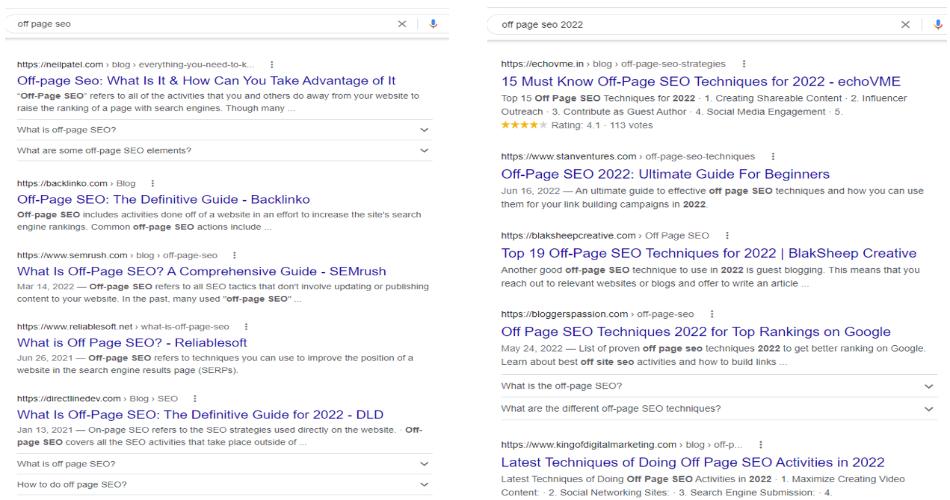
Difference in SERP
As you can see from the above example, we have two different SERPs. The first one only has one result with 2022 in the title but the second one has five 2022 in the title.
On-Page SEO and UX Signals
UX signals are also known as user experience signals. What user experience on your website. It can affect your page ranking on google search results.
We can improve SEO performance by improving UX. Here are some points to have a better user experience for your website.
-
- Website Security
- Mobile-Friendly Website
- Speed of the Pages
- Search intent – Balance between the search query and result.
- Use pop-ups wisely.
Schema Markup
Schema markup, aka structured data, is a code or microdata. It offers more specific information to search engines so that they can better interpret your content. When we add schema markup to a webpage, we get a rich snippet. It will be listed in the search results.
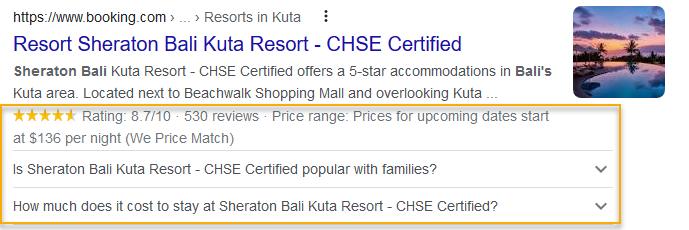
Example of Schema Markup
You can use Google’s Structured Data Markup Helper to markup parts on your website.
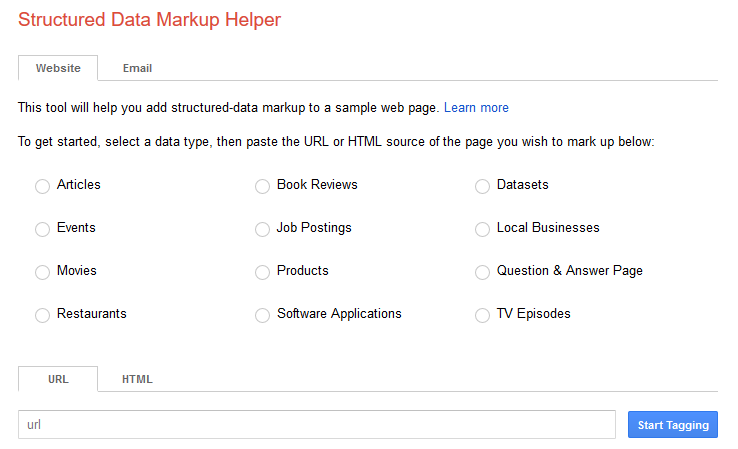
Google’s Structured Data Markup Helper
Or you can use Schema Markup Generator to generate Schema code.
Readability
When implementing on-page SEO, we must pay particular attention to readability. It is easier for Google and users to comprehend and understand the readable text better. Ultimately that benefits overall SEO performance. Your website might experience a high bounce rate, low conversion, and ROI if your content is difficult to understand.
You can use a plugin called Yoast SEO for a WordPress website to check and correct the overall readability of your post.
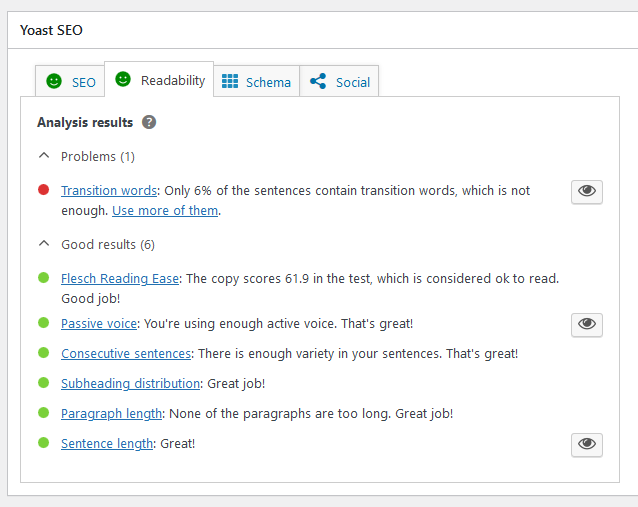
Readability on Yoast SEO
Otherwise, you can have the below checklist for good readability.
-
- Length of sentences
- Length of paragraph
- The majority of the sentences are written in the active voice.
- Variety in sentence construction.
- Make use of transition sentences and words.
- Make use of subheadings.
Comments and On-Page SEO
Blog comments are still crucial. It indicates that people like your content and engage with the website, which can help the SEO. It is a method of increasing the time people spend on the page and your website.
Follow these tips to get the most out of your comments:
-
- Before publishing, please filter comments.
- Avoid publishing comments that are generic.
- Accept relevant comments that add value to the page’s content.
- Avoid publishing spam comments.
- Always respond to comments; doing so will inspire additional people to leave comments.
Why On-Page SEO is Important?
Google’s algorithm is continually evolving. By doing this, it seeks to improve its understanding of visitors’ intent and experience on a page.
On-page SEO assists in optimizing your site for both human eyes and search engines. The modifications and changes you make to optimize your website are visible to visitors on your page.
On-page SEO is vital since it informs Google everything about your website and how you deliver value to users and consumers. The website owner has complete control over all aspects of on-page SEO. It is entirely up to them whether or not they can implement proper on-page SEO tactics.
Mixing the above on-page SEO checklist with off-site SEO such as link-building and guest blogging will significantly boost your search engine rankings. Although certain parts of technical SEO are related to on-page SEO. We left out the Technical SEO strategies here. We have a separate post on Technical SEO. You can have a peek at that.
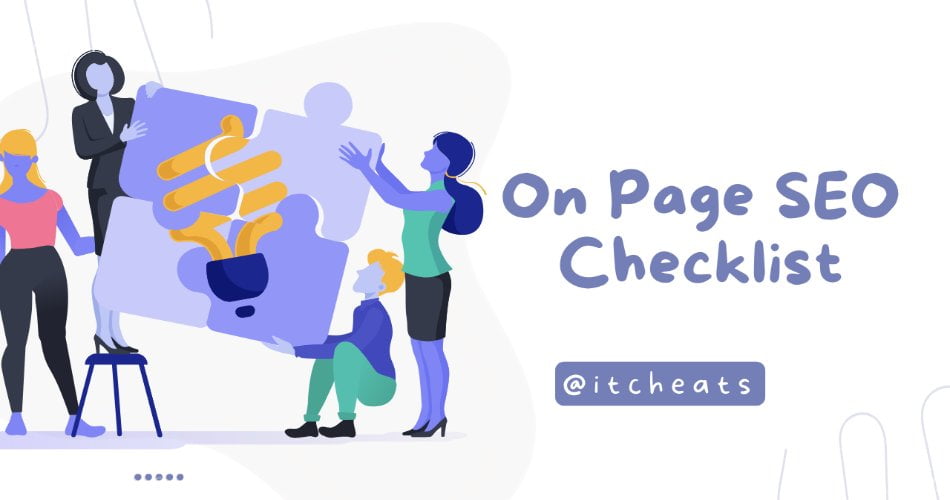
We do not do SEO services for others. This article is for creating a little bit of knowledge for others. So that they can develop their website SEO gradually.
I intended to compose you one bit of word so as to thank you so much again for your extraordinary suggestions you’ve discussed at this time. It was so wonderfully generous of people like you to offer without restraint what exactly most of us could possibly have sold as an electronic book in order to make some dough for themselves, most notably since you might well have done it in the event you decided. These guidelines in addition served to provide a good way to fully grasp that some people have the identical keenness really like my personal own to know the truth much more in regard to this matter. I am certain there are lots of more pleasurable instances in the future for folks who view your blog post.
I think this is among the most important information for me.
And i’m glad reading your article. But wanna remark on some general
things, The site style is perfect, the articles
is really great : D. Good job, cheers